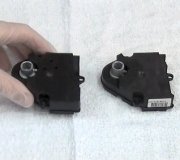Nope. The same can be said of every electrical problem on every car since the beginning of time. It worked at one point, then it didn't. The only variable is what happened in between. The ignition switch could have been turned off overnight. The car could have hit a bump. A transistor shorted while a comet passed overhead. (Obviously the two are not related). A weak solder connection let go just as you completed a right turn. (Also not related).
The ones that concern me are, for example, a wire rubbed through and shorted to the body, and that caused a fuse to blow, and it took five years, three days, and two hours for that to occur. Where was the car when that happened? If the problem showed up while you were driving on the highway, you'd take it in to be diagnosed. BUT, ... If it happened while the mechanic was driving the car into the shop for an oil change, you would unfairly blame him for causing the problem.
There is no correlation between how the problem occurred and how serious it is. You can have an intermittent misfire due to a bad connection inside a $1200.00 Engine Computer. I'd call that pretty serious even though you can still drive the car. You could have a no-start condition and have to walk to work caused by a failed $25.00 crankshaft position sensor. That is not at all serious but it too can occur all of a sudden, without warning, while you're driving or first thing in the morning.
In your case, if you DO find a blown fuse, I doubt we're looking at a bad solder connection because those almost always stop a circuit from working but they don't cause excessive current flow and thus, blown fuses. The fuses are just the place to start. If they're okay, we can move on to some other tests as long as I can get some useful information from the wiring diagrams.
Monday, February 23rd, 2015 AT 3:26 PM



